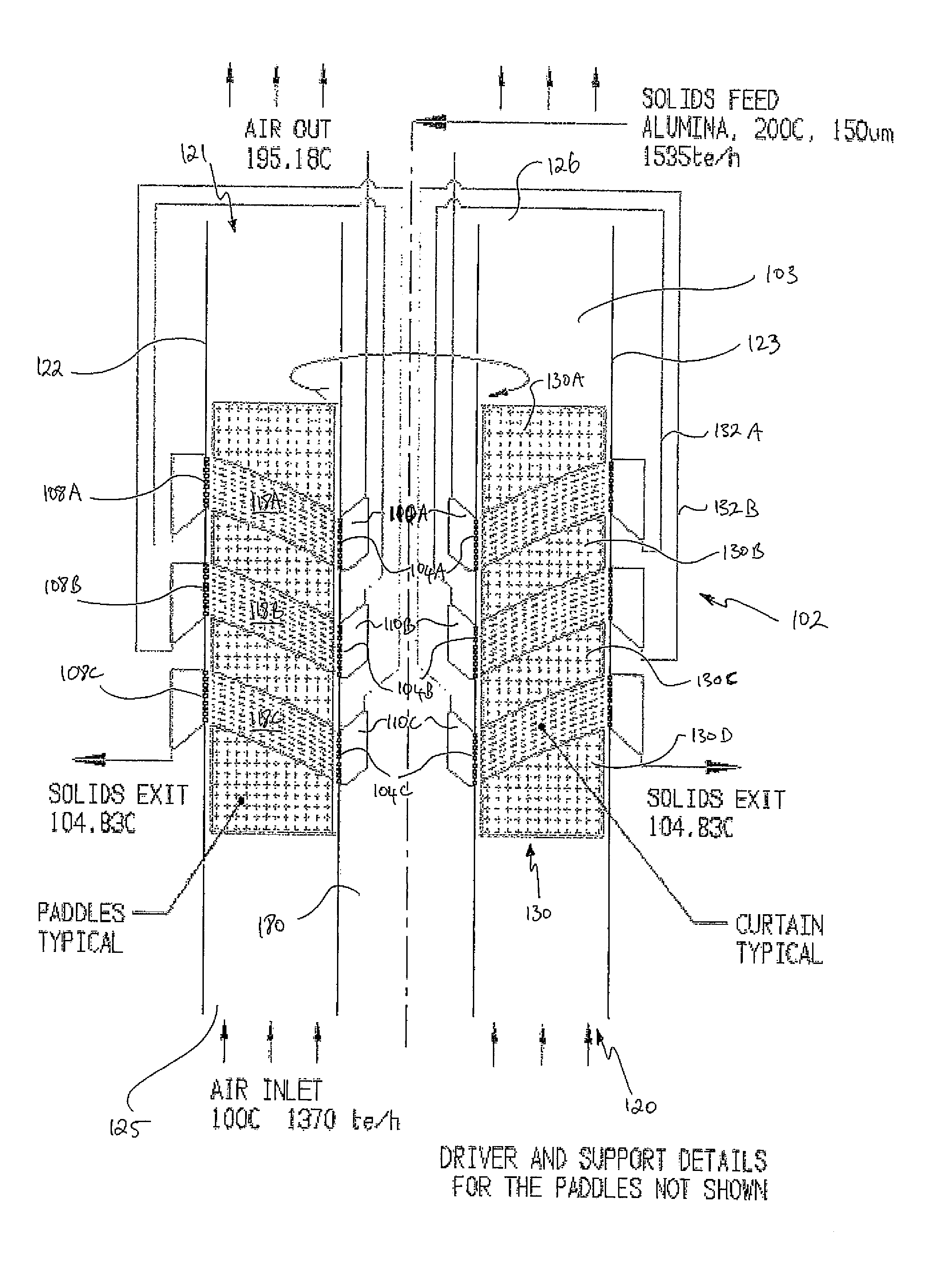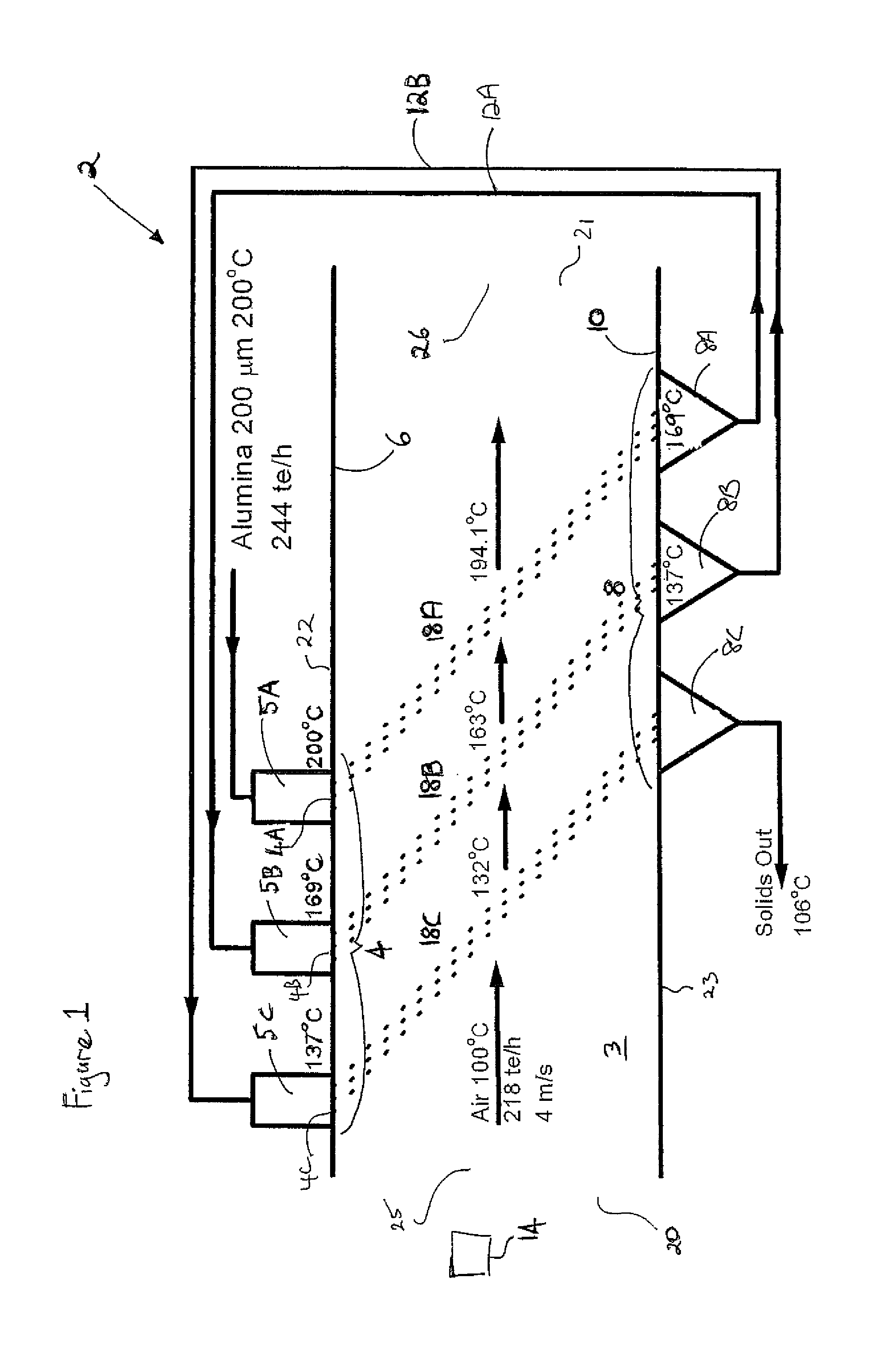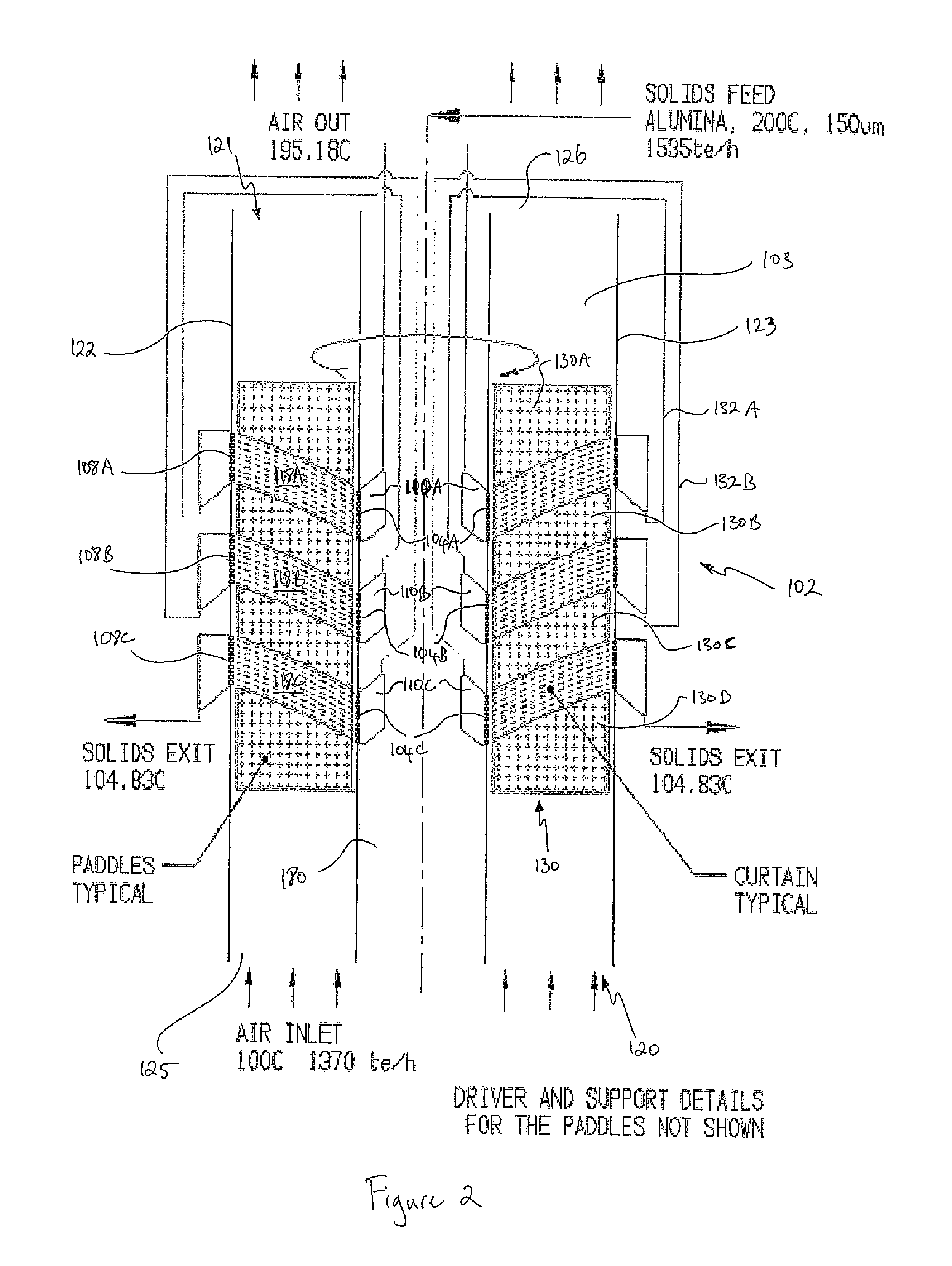Gas-particle processor
a gas-particle processor and gas-particle technology, applied in the field of gas-particle processing and gas-particle processors, can solve the problems of increased pressure drop, inefficiency of gas-solid contactors, and their own deficiencies, so as to reduce space and cost requirements, the effect of reducing space and cost requirements
- Summary
- Abstract
- Description
- Claims
- Application Information
AI Technical Summary
Benefits of technology
Problems solved by technology
Method used
Image
Examples
example 1
[0151]Gas feeder 14 introduces a stream of gas at a mass flowrate of 218 tonnes / hr, a velocity of 4 m / s and a temperature of 100° C. into a 4 m×4 m chamber. The gas stream exits the chamber from gas outlet 26.
[0152]A stream of alumina particles of 200 μm in diameter, a mass flowrate of 244 tonnes / hr and a temperature of 200° C. is introduced into the chamber from particle feeder 5A.
[0153]As the particles fall through the gas stream, heat exchange occurs between the particle stream and the gas stream at stage 18A. This results in cooling of the alumina stream to 169° C. under ideal conditions. Recycling of this particle stream occurs as it exits through particle outlet 8A and is fed to particle inlet 4B via conduit 12A. For the purposes of this calculation, no or little heat exchange is assumed for the flow in any connecting conduits. The particle stream re-enters processor 2 at stage 18B. Further heat exchange between the particle stream and the gas stream occurs as the temperature ...
example 2
[0155]Gas feeder 114 introduces a stream of gas at a mass flowrate of 1370 tonnes / hr, a velocity of 4 m / s and a temperature of 100° C. into a chamber having a 12 m outer diameter and a central particle feeder member which is 4 m in diameter. The gas stream exits processor 102 from gas outlet 126. Paddles 130A, 130B and 130C are located between processing stages 118A, 118B and 118C to provide a means for gas rotation. Additional paddles 130B, 130D and 130F may be located within stages 118A, 118B and 118C, respectively, which may be also used to regulate the rotational velocity of the gas. These paddles would be in the form of a number of small paddles fixed to a rotating framework.
[0156]A stream of alumina particles of 150 μm in diameter, at a mass flowrate of 1535 tonnes / hr and a temperature of 200° C. is introduced into the chamber from particle feeder 110A.
[0157]As the particles are introduced into the chamber through particle inlet 104A, centrifugal forces imparted by the spirali...
PUM
 Login to View More
Login to View More Abstract
Description
Claims
Application Information
 Login to View More
Login to View More - R&D
- Intellectual Property
- Life Sciences
- Materials
- Tech Scout
- Unparalleled Data Quality
- Higher Quality Content
- 60% Fewer Hallucinations
Browse by: Latest US Patents, China's latest patents, Technical Efficacy Thesaurus, Application Domain, Technology Topic, Popular Technical Reports.
© 2025 PatSnap. All rights reserved.Legal|Privacy policy|Modern Slavery Act Transparency Statement|Sitemap|About US| Contact US: help@patsnap.com



